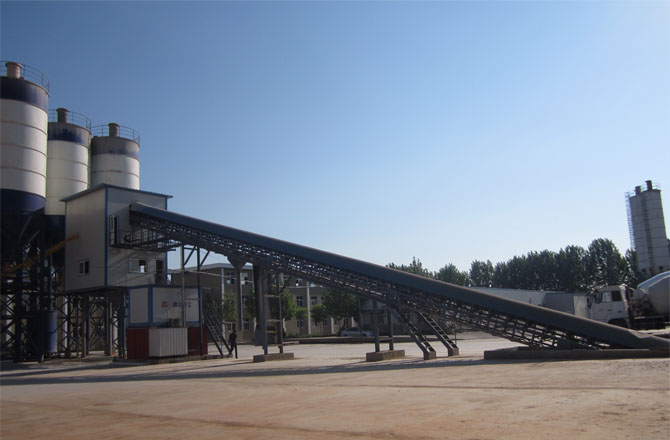The construction method of concrete mixing plant
Writer:Admin Time:19/02/17The construction method of concrete mixing plant:
1.Clear list of to built a concrete mixing plant
After the site is selected, surface debris and mud are removed by excavator and shipped to the designated site for stacking.
2. Site excavation
Before site excavation, cut-off ditches at the top of slopes should be made, and seepage control should be done according to soil conditions.
Site excavation must be carried out from top to bottom. No random excavation, over-excavation or under-excavation should be allowed. When excavating to the top of the site, attention should be paid to reserving the height of roller compaction settlement. When encountering stones, crushing hammer should be used for construction. After excavation to the design elevation, compaction and smoothness can not meet the requirements of bearing capacity by replacement with flake stone.
3. Site Hardening
First stage: 1m flake + 0.3m water stabilized layer + 0.2mC25 concrete
Second and Third Levels: 0.3m Water Stabilized Layer + 0.2mC25 Concrete
1. Replacement of tablets
According to the topography of the site, most of the first-level platforms are located in paddy fields, and after silt removal, the tablets are replaced by stones.

2, grass-roots level
The cement content of Cement Stabilized Graded Macadam Base is 5%. The cement material requires ordinary Portland cement, slag Portland cement and pozzolanic Portland cement. Cement with initial setting time of more than 3 hours and intermediate setting time of more than 6 hours should be selected. The macadam should choose solid and clean granular materials. Its maximum particle size should be less than 31.5 mm, and aggregate value in macadam base should be less than 30%. Mechanical paving and rolling are used to control the paving thickness and compaction thickness of the water stabilized layer, and the rolling meets the design and specification requirements.
3. C25 concrete surface
(1) Concrete mix ratio
Concrete mix proportion should be calculated and tested according to the relationship between water cement ratio and strength, and should be designed according to compressive strength to make strength test with flexural strength. Raw materials should be inspected before entering the site to be qualified before entering the site. The theoretical mix proportion should be converted into construction mix proportion according to the moisture content of aggregate in the site during construction, as the basis of construction mix proportion.
(2) Concrete mixing and transportation
The proportioning must be accurate, the sand, stone and bulk cement must be excessively weighted, the concrete should not leak when transported, and segregation should be prevented. The discharging height should not exceed 1.5m during discharging and paving.
(3) Concrete pouring
The formwork shall be made of steel, the plane position and elevation of the vertical formwork shall meet the design requirements, the support shall be accurate and stable, the joints shall be tight and smooth, and no grouting leakage shall be allowed, and the interface between the formwork and concrete shall be coated with isolating agent. Vibrating rammer should first use insertion rammer ramming edge angle, then use no less than 2.2 kilowatt flat plate rammer criss-cross comprehensive vibration rammer, overlap 10-500 PX in round trip, vibration time at each position should not be less than 15S, water-cement ratio less than 0.45, vibration time should not be less than S. The insertion vibrator should not be less than 20S and should not be over-vibrated. The construction and filling of concrete joints shall meet the requirements of relevant codes.

